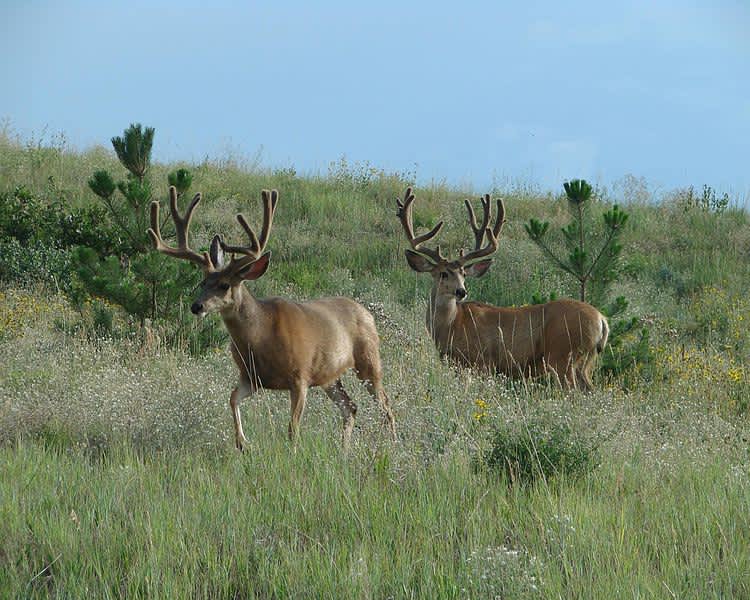USDA Announces Farm Bill Funding for Increased Access, Wildlife Conservation
OutdoorHub Reporters 08.18.14

Agriculture Secretary Tom Vilsack recently announced an additional $20 million in grants to increase access for hunters and anglers, protecting wildlife, and enhancing business opportunities for rural economies. The funding comes as a part of the US Department of Agriculture’s Voluntary Public Access and Habitat Incentive Program (VPA-HIP), which was authorized by the 2014 Farm Bill.
“The funds we are announcing today will empower state and tribal governments to partner with landowners in their areas to enhance outdoor recreation opportunities, protect at-risk wildlife, and spur new opportunities for rural businesses,” said Vilsack in a press release. “Partnerships are the key to locally-led, innovative use of private lands, and this is the latest example of the Obama Administration and USDA’s successful efforts to connect public and private partners for long-term conservation results.”
The $20 million will go to nine states and the Confederated Tribes and Bands of the Yakima Nation, only a portion of the 25 states requesting over $62 million in funding. A second round of funding will be considered later this year in the fall. For now, the funds will go towards hiring additional staff for state wildlife agencies, encouraging land owners, farmers, and ranchers to open their lands to public recreation, and expanding wildlife habitat. A detailed list of where the funds will be going has been provided by the USDA below:
- Arizona Game and Fish Department; $2.2 million: The Department plans to expand its public access program by working with more landowners through the provision of incentive payments, hiring additional staff and boosting outreach efforts.
- Confederated Tribes and Bands of the Yakima Nation; $131,000: The tribal government will complete construction of a wildlife viewing center, opening access to 8,500 acres of private land and 12,500 acres of tribal lands for hiking, bird watching and photography.
- Georgia Department of Natural Resources; $994,000: The Department will expand its Wildlife Management Area program.
- Illinois Department of Natural Resources; $1.7 million: The Department will “grow” its public access program with a goal of making land available for recreation while also helping at-risk species like the golden wing warbler and bog turtle.
- Iowa Department of Natural Resources; $3 million: Funding will provide conservation assistance to landowners, enhancing 22,000 acres of wildlife habitat and opening an area to the public for hunting.
- Michigan Department of Natural Resources; $1.2 million: The Department will add dozens of farms to its hunting access program, boosting acreage by about 8,000 acres.
- Montana Fish, Wildlife and Parks; $490,000: The Department will work with 150 private landowners to open access up to 48,000 acres for hunting, fishing and other recreational activities.
- Pennsylvania Game Commission; $6 million: The Commission will expand its public access program with a goal of making land available for recreation while also helping at-risk species.
- South Dakota Department of Game, Fish and Parks; $1.5 million: The Agency will increase public access to private lands in the southeastern portion of the state for hunting and recreational activities, as well as improve wildlife habitat.
- Texas Parks and Wildlife Department; $2.4 million: The Department will increase land available and participation in hunting as well as boosting wildlife populations by working with private landowners.
On a local level, the funds could have a major impact.
“We partner with local farmers to create programs with environmental benefits and conservational value,” Diana Waller told The Turlock Journal. “We provide technical and financial assistance to farmers and ranchers throughout the county.”
Waller is a District Conservationist with the Natural Resources Conservation Service in Stanislaus County, California, helping landowners improve air and water quality, and offering incentives to allow hunters, anglers, hikers, and other outdoor enthusiasts onto their property. The USDA considers lack of access, especially near urban areas, to be a fundamental reason why individuals do not get involved in outdoor activities.
Increasing access not only draws more enthusiasts—it also means more funding for protecting wildlife. The Outdoor Industry Association reports that 6.1 million jobs can be directly traced back to outdoor recreation, generating more than $646 billion in consumer spending and $80 billion in tax revenue across the country.

